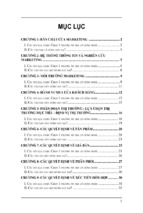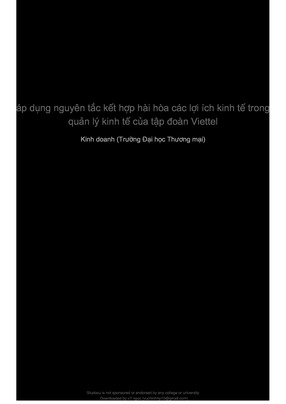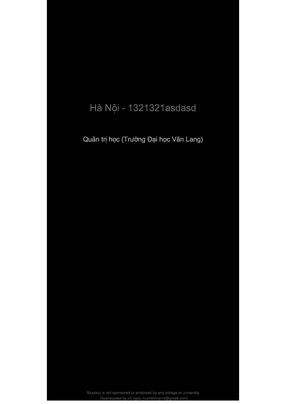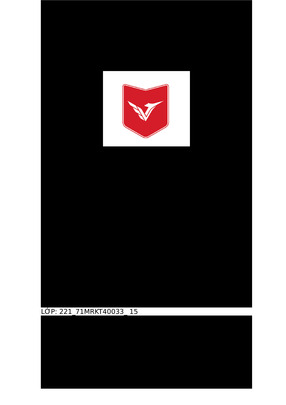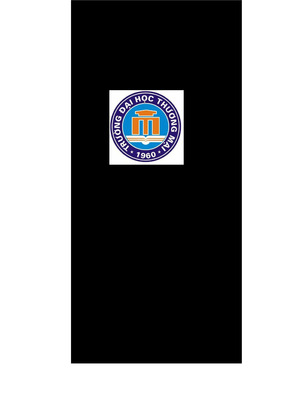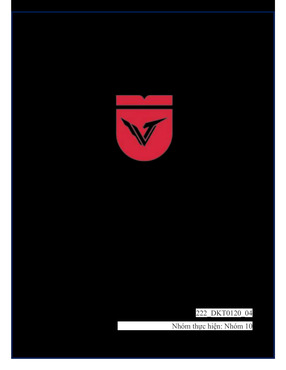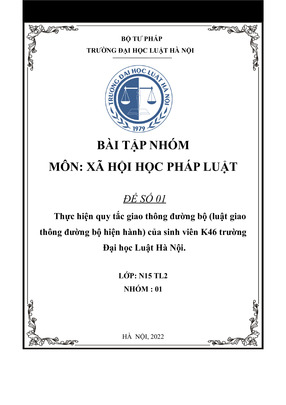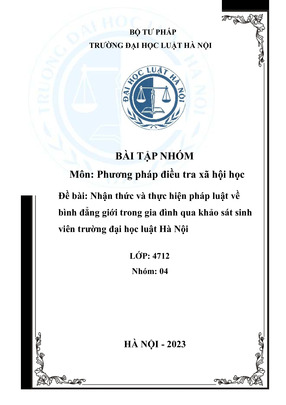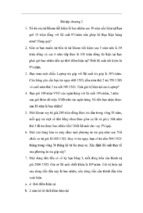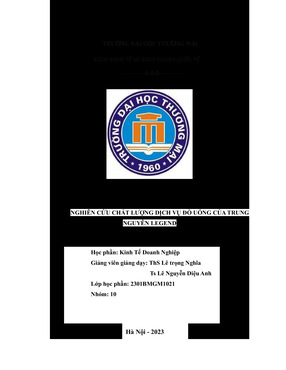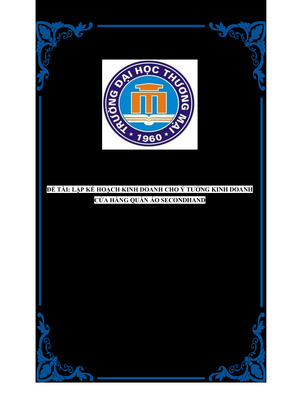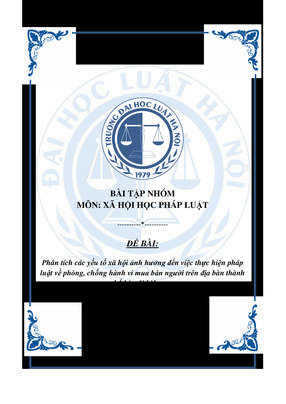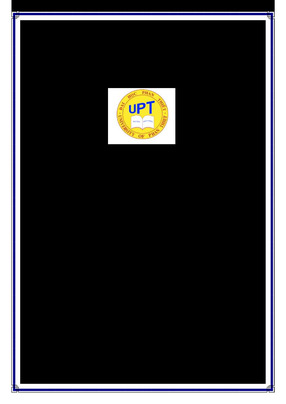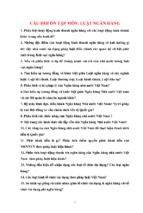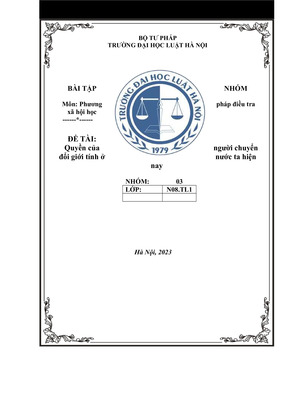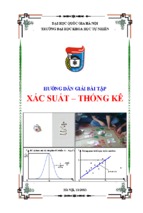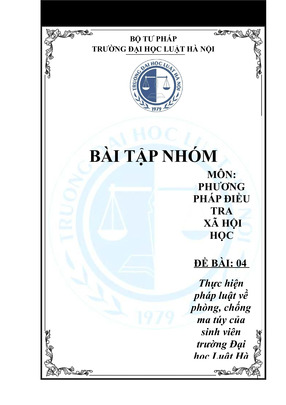BINH DUONG PROVINCIAL PEOPLE’S COMMITTEE
THU DAU MOT UNIVERSITY
NGUYEN HOANG MAI PHUONG
SPEECH ACTS IN EMAIL COMMUNICATION FOR
INTERNATIONAL RELATIONS AT THU DAU MOT
UNIVERSITY
MAJOR: ENGLISH LANGUAGE
MAJOR CODE: 8220201
MASTER THESIS IN ENGLISH LANGUAGE
BINH DUONG PROVINCE – 2021
ỦY BAN NHÂN DÂN TỈNH BÌNH DƯƠNG
TRƯỜNG ĐẠI HỌC THỦ DẦU MỘT
--------------
NGUYỄN HOÀNG MAI PHƯƠNG
HÀNH ĐỘNG NGÔN TỪ TRONG GIAO TIẾP EMAIL
QUỐC TẾ TẠI TRƯỜNG ĐẠI HỌC THỦ DẦU MỘT
CHUYÊN NGÀNH: NGÔN NGỮ ANH
MÃ SỐ: 8220201
LUẬN VĂN THẠC SĨ
NGƯỜI HƯỚNG DẪN KHOA HỌC
TS. NGUYỄN THỊ THANH TÂM
BINH DUONG – 2021
ii
ACKNOWLEDGEMENTS
First of all, I would like to express my sincerest gratitude and appreciation
to Ph.D. Nguyen Thi Thanh Tam, my research supervisor, for her patient
guidance, enthusiastic encouragement, deep knowledge, and useful advice for
this thesis.
Secondly, I gratefully acknowledge Thu Dau Mot University in generally,
Faculty of English Language and Office of International Affairs in particular for
offering me the most favorable conditions to complete this thesis
Furthermore, I would like to express my deep gratitude to my Leaders and
colleagues at TDMU for their support and assistance in keeping my progress on
schedule.
Finally, I would like to express my sincerest thanks to my beloved family
for their support, sharing, and encouragement throughout my study. Without their
enthusiastic support and endless love, I would never have completed this thesis.
Author
iii
STATEMENT OF ORIGINALITY
I hereby declare that the thesis entitled “Speech Acts in Email
Communication for international relations at Thu Dau Mot University” is my
original work for the Master Degree of Faculty of English Language, Thu Dau
Mot University. This thesis does not contain published materials or written by
other people except those cited in the references. I further certify that this thesis
has not been submitted for other degrees or publication in any other education
institutions.
Binh Duong, November 2021
Author
NGUYEN HOANG MAI PHUONG
iv
RETENTION AND USE OF THESIS
I hereby state that I, NGUYEN HOANG MAI PHUONG, being a
candidate for the degree of Master of English Language accept the requirements
of the University relating to the retention and use of Master’s Theses deposited in
the Library. In this regard, I agree that the original of my Master’s thesis
deposited in the Library should be accessible for purposes of study and research.
Binh Duong, November 2021
Author
NGUYEN HOANG MAI PHUONG
v
TABLE OF CONTENT
ACKNOWLEDGEMENTS ................................................................................ iii
STATEMENT OF ORIGINALITY .................................................................. iv
RETENTION OF USE ........................................................................................ v
TABLE OF CONTENT ...................................................................................... vi
LIST OF TABLES ............................................................................................... x
LIST OF FIGURES AND CHARTS ................................................................. xi
LIST OF APPENDICES.................................................................................... xii
ABSTRACT ....................................................................................................... xiii
CHAPTER 1. INTRODUCTION ....................................................................... 1
1.1 Background to the study .......................................................................... 1
1.2. Aims of the study .................................................................................... 4
1.3. Research objectives and questions .......................................................... 4
1.3.1. Research objectives ..................................................................... 4
1.3.2. Research questions ...................................................................... 5
1.4. Significance of the study ......................................................................... 5
1.4.1. Practical Significance .................................................................. 5
1.4.2. Theoretical Significance .............................................................. 5
1.5. Scope of the study ................................................................................... 6
1.6. Limitations of the study .......................................................................... 6
1.7. Organization of the study ........................................................................ 6
1.8. Summary ................................................................................................. 7
CHAPTER 2. LITERATURE REVIEW ........................................................... 8
2.1. Pragmatics and Speech Acts in Pragmatics ............................................ 8
2.1.1. Definition of Pragmatics .............................................................. 8
vi
2.1.2. Speech Acts ................................................................................. 9
2.1.2.1. Definition of Speech Acts......................................................... 9
2.1.2.2. Types of Speech Acts ............................................................. 10
2.2. Previous Studies of Speech Acts........................................................... 15
2.3. Email Communication .......................................................................... 17
2.3.1. Parts of Emails ........................................................................... 18
2.3.2. Language use in writing emails ................................................. 19
2.3.3. Types of Emails ......................................................................... 25
2.4. Speech Act in Email Communication ................................................... 26
2.5. Context .................................................................................................. 27
2.6. Conceptual framework of the study ...................................................... 27
2.7. Summary ............................................................................................... 29
CHAPTER 3. METHODOLOGY .................................................................... 30
3.1. Research Design .................................................................................... 30
3.2. Research Questions ............................................................................... 31
3.3. Setting ................................................................................................... 32
3.4. Data source and samples ....................................................................... 32
3.4.1. Data sources ............................................................................... 32
3.4.2. Samples ...................................................................................... 32
3.5. Instruments of the Research .................................................................. 32
3.6. Data Collection Method ........................................................................ 34
3.7. Data Analysis Method........................................................................... 34
3.8. Data Trustworthiness ............................................................................ 35
3.9. Summary ............................................................................................... 36
CHAPTER 4. RESULTS AND DISCUSSION ................................................ 38
4.1. Results ................................................................................................... 38
4.2. Discussion ............................................................................................. 45
4.3. Summary ............................................................................................... 78
CHAPTER 5. CONCLUSION .......................................................................... 80
vii
5.1. Conclusion ............................................................................................ 80
5.2. Implications of the research .................................................................. 81
5.2.1. For OIA’s staff and others who work in the field of international
relations: .............................................................................................. 81
5.2.2. For students of English Language ............................................. 82
5.2.3. For lecturers of English Language............................................. 82
5.2.4. For other researchers ................................................................. 82
5.3. Recommendations for further study...................................................... 82
5.4. Summary ............................................................................................... 83
REFERENCES ................................................................................................... 84
APPENDICES .................................................................................................... 90
viii
LIST OF ABBREVIATIONS
TDMU
Thu Dau Mot University
OIA
Office of International Affairs
MOU
Memorandum of understanding
EAIM
East Asia Institute of Management
SUT
Suranaree University of Technology
UNISMA
University of Islam Malang
HNU
Hannam University
TAU
Tarlac Agricultural University
RSU
Rangsit University
CJCU
Chang Jung Christian University
GUFL
Guangxi University of Foreign Languages
CNU
Chungnam National University
NMIT
Nelson Malborough Institite of Technology
ix
LIST OF TABLES
Table 3.1. Data sheet of Speech Acts found in OIA’s emails ............................. 33
Table 4.1. Data of Representatives and their functions found in OIA’s emails .. 39
Table 4.2. Data of Directives and their functions found in OIA’s emails ........... 39
Table 4.3. Data of Commissives and their functions found in OIA’s emails ...... 40
Table 4.4. Data of Expressives and their functions found in OIA’s emails ........ 40
Table 4.5. Data of Declaratives and their functions found in OIA’s emails ....... 41
Table 4.6. The total types of Illocutionary Acts and their functions found in
OIA’s emails ........................................................................................................ 41
Table 4.7. List of each functions of the types of Illoctionary Acts ..................... 43
Table 4.8. Combinations of Illocutionary Acts’ types and their functions found in
OIA’s emails ........................................................................................................ 44
Table 4.9. Structures/Expressions and Sentences of Representatives’ Functions 74
Table 4.10. Structures/Expressions and Sentences of Commissives’ Functions . 75
Table 4.11. Structures/Expressions and Sentences of Directives’ Functions ...... 76
Table 4.12. Structures/Expressions and Sentences of Expressives’ Functions ... 77
Table 4.13. Sentences of the functions of four Illocutionary Acts’ types ........... 94
x
LIST OF FIGURES AND CHARTS
Figure 2.1. Framework of the study .................................................................... 29
Figure 4.1. Distribution of types of Illocutionary Acts found in OIA’s emails .. 41
Figure 4.2. Functions of four Illocutionary Acts’ types found in OIA’s emails . 42
xi
LIST OF APPENDICES
Appendix 1: Sample of OIA’s emails ............................................................. 90
Appendix 2: Table 4.7. List of each functions of the types of
Illocutionary Acts ........................................................................................... 104
Appendix 3: Table 4.13. Sentences of the functions of four Illocutionary Acts’
types ............................................................................................................... 105
Appendix 4: Datasheet of Speech Acts found in OIA’s emails .................... 106
xii
ABSTRACT
This present research focuses on Speech Acts, especially aims at
identifying types of Illocutionary Acts and their functions employed in emails of
the Office of International Affairs (OIA) at Thu Dau Mot University (TDMU).
The research data consists of 35 English outgoing emails from January
2018 to October 2021 of OIA, TDMU. Both qualitative and quantitative methods
are applied in this study. The descriptive, qualitative method is mainly employed
to analyze the data by classifying and interpreting data descriptively based on
Searle’s theory (1976) of Illocutionary Acts and emails’ context. Meanwhile, the
quantitative method is used by giving the percentages of the findings. The results
of this study show that there are four types of Illocutionary Acts and 28 functions
in OIA’s emails. Based on the results, it is figured out that OIA’s staff uses
expressive type with the main functions such as greeting, farewell, and thanking
most. The study can be a reference for OIA’s staff, students and lecturers of
English Language, and other researchers to get additional knowledge about
Speech Acts, especially Illocutionary Actc’ types and their functions in certain
contexts.
Keywords: Speech Acts, Illocutionary Acts’ types and functions, English
outgoing emails, Office of International Affairs, Thu Dau Mot University.
xiii
CHAPTER 1. INTRODUCTION
This
chapter
deals
with
the
background
of
the
study,
aim(s) of the study, research objectives and questions of the study, significance,
scope of the study, and the summary.
1.1 Background to the study
The trend of globalization and the explosion of science and technology
have been promoting each country's higher education for continuous innovation,
especially in international integration in order to quickly update new trends and
knowledge. Therefore, higher education in each country in general and at
universities in particular needs international integration to exchange, learn, and
innovate in accordance with the general trend of the world. In response to the
development of the new era, Office of International Affairs (OIA) is established
by Thu Dau Mot University (TDMU) - one of the public universities in southern
Vietnam to coordinate and manage international cooperation activities between
TDMU and foreign universities in order to improve the quality of education for
TDMU.
Located in Thu Dau Mot city, Binh Duong province, TDMU founded on
June 24th, 2009 is a prestigious public university. The forerunner of TDMU is
Binh Duong Pedagogical College - a prestigious pedagogical training institution
of Binh Duong province, providing a team of teachers having expertise and
knowledge in teaching, and enthusiasm for the young generation. The missions
of TDMU are training high-quality human resources to serve the socio-economic
development, international integration of Binh Duong Province, Southeast region
- the key economic zones of Southern region and become the Science Research
Center in the area. TDMU always places a great emphasis on training, scientific
research and especially in international cooperation. TDMU’s structure includes
the University Council, the Board of Directors, the Science and Training Council,
13 faculties - institutes, 14 functional departments, and 11 centers. The total
1
number of students is about 16,000 full-time students and 1000 graduate
students1. With the continuous development, TDMU has attracted more and more
international experts and volunteers to work, support training and carry out
scientific research at the University.
Over 10 years of construction and growth, TDMU has constantly risen to
successfully complete its educational and scientific missions. In 2015, TDMU is
honored to be a member of CDIO organization. It becomes an associate member
of the Association of Southeast Asian Universities and achieves the National
Education Accreditation Standard in 2017. TDMU also has 4 majors that meet
AUN - QA standards in December, 2019. (TDMU., 2019)
Contributing to the development of the university over the past 10 years is
the contribution of external activities and international cooperation. The
predecessor of the Office of International Affairs is the Office of Science and
International Relations, which is established under Decision No. 108/QĐĐHTDM of the President of Thu Dau Mot University. In 2010, the Office of
International Affairs is re-established from the separation of the Office of
Science and International Relations. The Office has the functions of advising the
President, and directly implementing communication activities to improve the
position of the University, establishing and maintaining cooperative relationships
with domestic and foreign partners to promote the development of the University
in all strategic activities2.
The Office of International Affairs has achieved some significant results
in expanding relations with many international partners and organizations in the
world. According to the report about international cooperation in 2021 of OIA,
until now, TDMU has signed 38 Memorandum of understanding (MOU) with the
educational institutions from countries: Japan, Korea, Taiwan, China, Thailand,
Singapore… and welcomed more than 100 international visitors from all over the
1
2
Thu Dau Mot University (2021). Gioi thieu. Retrieved from https://tdmu.edu.vn/Gioi-thieu
ibid.
2
world. The collaboration with foreign partners has brought TDMU many students
and lecturers exchange programs, collaborative training programs, scientific
conferences, and the improvement of university facilities. TDMU has also signed
cooperation agreements to supply high-quality labor for foreign enterprises
located in Binh Duong province. In addition, since 2010, TDMU has supported
training for students of the Lao People's Democratic Republic under the
cooperation agreement between Binh Duong province and Champasak province.
The international cooperation activities of OIA are mainly implemented
through email exchange with the partners. After achieving a successful exchange,
OIA will arrange face-to-face meetings to carry out the work. For this reason,
email exchange is one of important parts to establish a good relationship with the
partners.
In the current digital age, a series of scientific and technological
inventions are applied in life. In the old days, to send a letter, people have to
spend a lot of time going from home to the post office and put it in the mailbox.
Moreover, it takes much time to move mail from one place to another. There are
some problems during the sending process in the traditional way such as lost mail
and many other unexpected problems. To overcome that situation, Electronic
Mail (Email or E-mail) is invented. Email has begun to play an important role in
communication purposes with the growing in using the Internet. According to
Joseph Johnson (2021), there are over 306.4 billion emails sent and received per
day worldwide in 2021, this figure is forecast to grow to over 376.4 billion by
year-end 2025. The contact and exchange with foreign partners of OIA are also
mostly via emails. To communicate with partners from all over the world, OIA
uses some languages such as Chinese, Korean and especially English.
Consequently, the way to write emails in English effectively is important, which
requires the master of Speech Act Theory.
Using Speech Acts in emails when contacting and exchanging with
foreign partners of OIA is extremely critical to achieve the effect of
3
communication. If people who work in the field of international relations do not
know clearly about Speech Acts or the knowledge of Speech Acts, particularly
how Speech Acts perform and how to use Speech Acts, they may
misunderstanding the partners’ intended meanings through sentences and cannot
use Speech Acts effectively to convey their intentions to the partners as well.
That will lead to not being able to build a good relationship with partners.
Moreover, misunderstanding is one of the main reasons for disruption in
relationships. In TDMU, until now, the study on Speech Acts in emails,
especially with foreign partners in international relations has not been conducted
yet. In consequence, the researcher decides to conduct a study on Speech Acts
employed in email messages of OIA in TDMU.
Based on the background above, the researcher chooses to conduct a study
in the form of a thesis entitled “Speech Acts in Email Communication for
international relations at Thu Dau Mot University”.
1.2. Aims of the study
The study aims to investigate the types of Illocutionary Acts and point out
the functions of Illocutionary Acts applied in OIA’s emails in TDMU. After
finishing the study successfully, the researcher expects it is beneficial for people
who work/study in the field of international relations and Linguistics in general
and OIA’s staff in particular for using Speech Acts to communicate effectively.
1.3. Research objectives and questions
1.3.1. Research objectives
The present study has been designed to reach the following objectives:
• To identify the types of Illocutionary Acts employed in Office of
International Affairs’ emails in TDMU.
• To describe the functions of each type of Illocutionary Acts employed in
Office of International Affairs’ emails in TDMU.
4
1.3.2. Research questions
As a consequence, the study is aimed at seeking the answers to 2 oriented
questions as follows:
Question 1: What are the types of Illocutionary Acts employed in Office
of International Affairs’ emails in Thu Dau Mot University?
Question 2: What are the functions of each type of Illocutionary Acts
employed in Office of International Affairs’ emails in Thu Dau Mot University?
1.4. Significance of the study
The results of the study are expected to give contributions as follows:
1.4.1. Practical Significance
Office of International Affairs
The study results are expected to provide more knowledge and information
about Speech Acts for OIA’s staff. By doing this research, the researcher expects
it will help OIA’s staff to use Speech Acts easier and more effective to contact
and exchange with international partnerships and be able to interpret the partners’
intentions correctly via their sentences.
People
work/study
related
to
international
relations
and
Linguistics
The study also can be used as a reference for people who work and study in
the field of international relations and Linguistics
English teaching/ learning
The result of this study is a helpful material for English teaching/ learning to
use Speech Acts appropriately to achieve the effective communication.
1.4.2. Theoretical Significance
The findings of the study first are expected to enrich the comprehension
and understanding of Speech Acts. In other words, it is expected to enrich for the
5
corpus of Linguistics, especially Speech Acts. Moreover, this research can be
used as a reference for the researchers who conduct related research in the future.
Finally, it also is expected to inspire other researchers to open more deeper
researches about Speech Acts.
1.5. Scope of the study
This study focuses on analyzing the categories of the Illocutionary Acts
and their functions found in OIA’s emails in TDMU. The study data is obtained
from emails of OIA during the time period of January 2018 until October 2021
since the researcher only receives permission to get the emails during that time
period. In this study, the researcher tries to find the types of Illocutionary Acts
and their functions expressed in OIA’s emails based on the classification of
Searle (1976).
1.6. Limitations of the study
This research only focuses on the categorization of Speech Acts mainly
the types of the Illocutionary Acts and their functions proposed by Searle
expressed in OIA’s emails in TDMU from January 2018 to October 2021.
1.7. Organization of the study
This thesis consists of 5 chapters. They are Introduction, Literature
Review, Methodology, Results and Discussion and Conclusions.
Chapter 1: Introduction
In the chapter, the background of the study is provided. Then come the
aims, research questions and objectives. The significance, limitation and scope of
the study, organization of the study, and the summary are also presented in this
chapter.
Chapter 2: Literature Review
This chapter covers the literature review that involves the theories related
to the study, the definition of Pragmatics, Speech Acts, Emails and context.
6
Moreover, some previous studies are reviewed. This chapter also provides the
conceptual framework of the study and the summary of this chapter.
Chapter 3: Methodology
This chapter describes the methodology applied in carrying the study. It
includes research design, setting, data sources and samples, and instruments of
the study. It also comprises the approach of data collection and data analysis, the
data trustworthiness of the study, and the summary of this chapter.
Chapter 4: Results and Discussion
Chapter 4 presents the results of the study and the discussion of the results
from collected data. The summary of this chapter is also provided.
Chapter 5: Conclusion
This chapter deals with the conclusions of the study, the implications of
the study and the recommendations for the next studies.
1.8. Summary
Speech Act is one of the aspects of Pragmatics that attracts various
researchers to study so there have been several studies on Speech Acts conducted
by researchers all over the world in numerous decades. However, up to now,
there has not been any research on Speech Acts especially in emails in the field
of international cooperation at TDMU. Therefore, the study aims at analyzing the
types of Illocutionary Acts and their functions found in OIA’s emails to help
OIA’s staff and other people who work/study in the field of international
relations using Speech Acts effectively. It also contributes to enhancing the work
efficiency for OIA, thereby contributing to the development of TDMU.
7
- Xem thêm -


